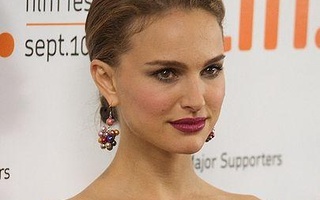At the age of 10, I started performing in school plays and going to drama camps over the summer. While my passion for theater took a nosedive once I hit high school and discovered I lacked any hint of talent, at the time, my parents and teachers fed my young ego by telling me I was an amazing actress.
Yet despite my budding ambitions, I was often put off by that compliment. I wanted to be an actor, not an actress. To me, an actor was a person who acts in plays, while an actress was a female version of that thing. I didn’t want to be a female version; I wanted to be the real thing.
I wasn’t far off. A quick dictionary search for the terms actor and actress yields definitions, respectively, of “one who represents a character in a dramatic production,” and, “a female actor.” Men or women can be called actors, but only women are actresses: Actor is the default, and actress is the female version.
Simone de Beauvoir got it right when she wrote in The Second Sex: “Man is defined as a human being and a woman as a female.” We see women as the other: Instead of being two equal and opposite halves of humanity, men are the default humans, and women are a secondary version of that norm. Even before I could articulate the problem as a young, aspiring actor, I could feel its truth.
Gendered job titles strangely persist: Words like “waitress” and “stewardess” are remnants of an age when we also used the terms “authoress” and “lady judge” to delegate female professionals to a secondary version of all jobs. And while “actress” may need to stick around for the Academy to properly categorize awards, I’m all for switching to gender-neutral terms like “firefighter, and “mail carrier” in lieu of “fireman” and “mailman.” And I think it’s great that Fed chair Janet Yellen asked her staff to call her “chair” instead of “chairwoman.”
It’s not just job titles—the status of males as the default is also particularly apparent in pop culture. Anita Sarkeesian’s video series “Tropes vs. Women in Video Games” discusses the concept of a Ms. Male Character, who is “a female version of an already established or default male character” (think Minnie Mouse or Ms. Pac-man), as well as the closely connected Smurfette Principle, wherein a single female character (like Smurfette of the Smurfs series or Kanga in Winnie the Pooh) exists in a world that is otherwise entirely male. Both phenomena reinforce the idea that characters are always male unless specifically identified otherwise— typically via the addition of a hair bow or pink outfit. Pac-man doesn’t look particularly male, but he’s male by default.
The Bechdel Test reveals a similar phenomenon in mainstream movies: Far too many films don’t meet the simple requirement that two female characters speak to one another about something other than a man. In films, as in cartoons and video games, men are largely the default characters and women only exist to serve uniquely female roles—which in this case involves talking to or about men.
These pop culture trends are just exaggerated reflections of the way we still think about women in society. It happens when we automatically say “he” when referring to an anonymous, genderless, hypothetical person. It’s present in the male and female symbols we use on bathroom doors: The “men” symbol is a basic human figure, and the “women” symbol has an extra skirt added on to differentiate her as female and different from the norm. (Don’t believe me? Then why do the genderless handicap signs or crosswalk signs also resemble the male bathroom sign?) It happens when companies market pink “girl versions” of products that should have been gender-neutral in the first place.
Sure, there are all sorts of pressing feminist issues that are far less subtle. Yet the fact that women are treated as deviations from the norm means that even independent of any policy issues, the way we think about gender is messed up. It shows that even though women have important legal rights, we still need feminism.
While anti-feminists argue that men and women are different and that’s a good thing, the problem is not with the fact that there’s a distinction, but rather with how that distinction is drawn. I’m fine with being different from men in certain ways, but I am not a female version of an otherwise normal human being.
Stephanie G. Franklin ’16, a Crimson editorial writer, is a social studies concentrator in Dunster House.
Read more in Opinion
The Real World?Recommended Articles
-
 Natalie Portman Will Battle Zombies
Natalie Portman Will Battle Zombies -
Default Rates on Student Loans RiseDefault rates on student loans are increasing, as Education Secretary Arne S. Duncan ’86 announced last week, but the news has not translated into dramatic changes for a private university like Harvard.
-
 Emma Watson, Sexual Harassment, and Luring
Emma Watson, Sexual Harassment, and Luring -
Marion Cotillard Named 2013 Hasty Pudding Woman of the YearFrench actress Marion Cotillard has been named the recipient of the Hasty Pudding Theatricals 2013 Woman of the Year award.
-
 Oscar Picks: The Back Page Edition
Oscar Picks: The Back Page Edition -
 Campus Currencies: A Detailed Breakdown
Campus Currencies: A Detailed Breakdown













